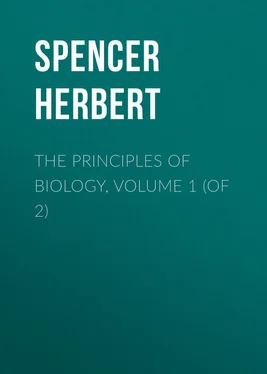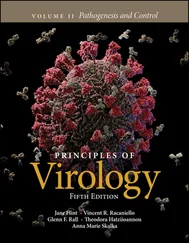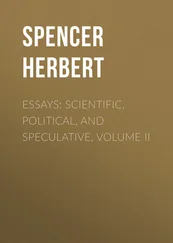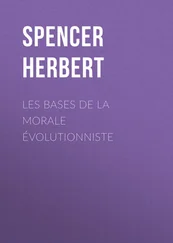This interpretation is said to be disproved by the fact that the carbo-hydrate contained in muscle amounts to only about 1.5 of the total solids. I do not see how this statement is to be reconciled with the statement cited three pages back from Professor Michael Foster, that the deposits of glycogen contained in the liver and in the muscles may be compared to the deposits in a central bank and branch banks.
Before leaving the topic let me remark that the doctrine of metabolism is at present in its inchoate stage, and that the prevailing conclusions should be held tentatively. As showing this need an anomalous fact may be named. It was long held that gelatine is of small value as food, and though it is now recognized as valuable because serving the same purposes as fats and carbo-hydrates, it is still held to be valueless for structural purposes (save for some inactive tissue); and this estimate agrees with the fact that it is a relatively stable nitrogenous compound, and therefore unfit for those functions performed by unstable nitrogenous compounds in the muscular and other tissues. But if this is true, it seems a necessary implication that such substances as hair, wool, feathers, and all dermal growths chemically akin to gelatine, and even more stable, ought to be equally innutritive or more innutritive. In that case, however, what are we to say of the larva of the clothes-moth, which subsists exclusively on one or other of these substances, and out of it forms all those unstable nitrogenous compounds needful for carrying on its life and developing its tissues? Or again, how are we to understand the nutrition of the book-worm, which, in the time-stained leaves through which it burrows, finds no proteid save that contained in the dried-up size, which is a form of gelatine; or, once more, in what form is the requisite amount of nitrogenous substance obtained by the coleopterous larva which eats holes in wood a century old?
This chapter and the following two chapters originally appeared in Part III of the original edition of the Principles of Psychology (1855): forming a preliminary which, though indispensable to the argument there developed, was somewhat parenthetical. Having now to deal with the general science of Biology before the more special one of Psychology, it becomes possible to transfer these chapters to their proper place.
See Westminster Review for April, 1852. – Art. IV. "A Theory of Population." See Appendix A.
This paragraph replaces a sentence that, in The Principles of Psychology , referred to a preceding chapter on "Method;" in which the mode of procedure here indicated was set forth as a mode to be systematically pursued in the choice of hypotheses. This chapter on Method is now included, along with other matter, in a volume entitled Various Fragments .
Speaking of "the general idea of life " M. Comte says: – "Cette idée suppose, en effet, non-seulement celle d'un être organisé de manière à comporter l'état vital, mais aussi celle, non moins indispensable, d'un certain ensemble d'influences extérieures propres à son accomplissement. Une telle harmonie entre l'être vivant et le milieu correspondant, caractérise evidemment la condition fondamentale de la vie." Commenting on de Blainville's definition of life, which he adopts, he says: – "Cette lumineuse définition ne me paraît laisser rien d'important à désirer, si ce n'est une indication plus directe et plus explicite de ces deux conditions fondamentales co-relatives, nécessairement inséparables de l'état vivant, un organisme déterminé et un milieu convenable." It is strange that M. Comte should have thus recognized the necessity of a harmony between an organism and its environment, as a condition essential to life, and should not have seen that the continuous maintenance of such inner actions as will counterbalance outer actions, constitutes life.
[When the original edition was published Dr. J. H. Bridges wrote to me saying that in the Politique Positive , Comte had developed his conception further. On p. 413, denying "le prétendu antagonisme des corps vivants envers leurs milieux inorganiques," he says "au lieu de ce conflit, on a reconnu bientôt que cette relation nécessaire constitue une condition fondamentale de la vie réelle, dont la notion systématique consiste dans une intime conciliation permanente entre la spontanéité intérieure et la fatalité extérieure." Still, this "conciliation permanente " seems to be a " condition " to life; not that varying adjustment of changes which life consists in maintaining. In presence of an ambiguity, the interpretation which agrees with his previous statement must be chosen.]
In further elucidation of this general doctrine, see First Principles , § 25.
In ordinary speech Development is often used as synonymous with Growth. It hence seems needful to say that Development as here and hereafter used, means increase of structure and not increase of bulk . It may be added that the word Evolution, comprehending growth as well as Development, is to be reserved for occasions when both are implied.
This paragraph originally formed part of a review-article on "Transcendental Physiology," published in 1857.
When, in 1863, the preceding chapter was written, it had not occurred to me that there needed an accompanying chapter treating of Structure. The gap left by that oversight I now fill up. In doing this there have been included certain statements which are tacitly presupposed in the last chapter, and there may also be some which overlap statements in the next chapter. I have not thought it needful so to alter adjacent chapters as to remove these slight defects: the duplicated ideas will bear re-emphasizing.












